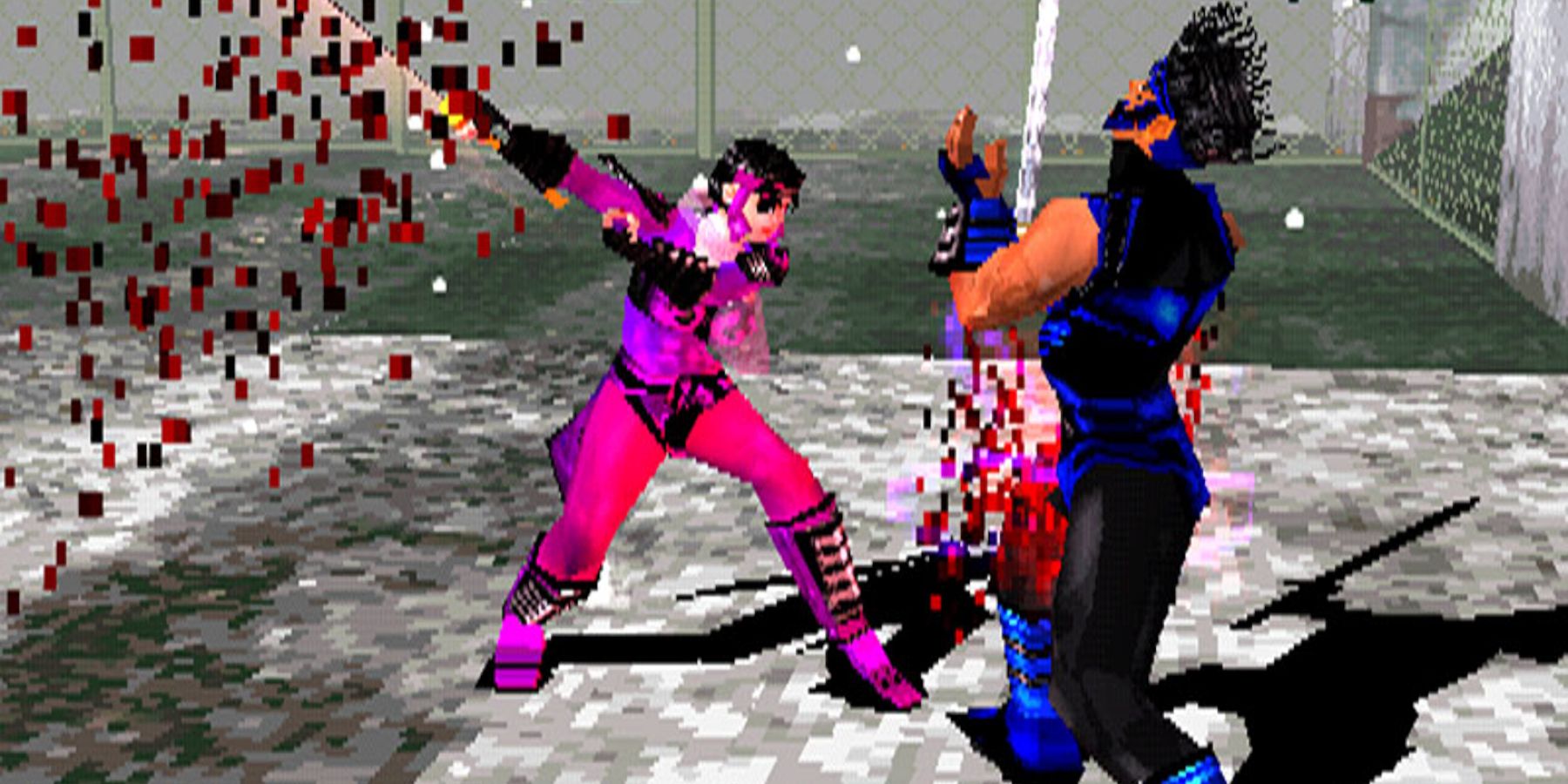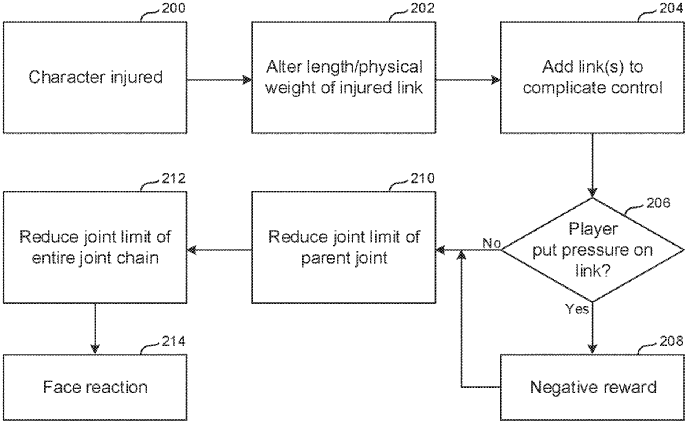Video game violence has been everpresent since Mortal Kombat and the FPS boom of the 90s. Yet despite the saturation of ultraviolence in AAA game development, technology surrounding the depiction of violence hasn't changed much. Mortal Kombat has X-Ray attacks, Doom has executions, but generally speaking, enemies take damage without it impacting their performance, and then they die. A newly published patent from Sony, however, appears to be trying something new.
Published in July, Sony Interactive Entertainment's patent is titled "Simulating Motion of Computer Simulation Characters to Account for Simulated Injuries to the Characters Using Current Motion Model." It's certainly descriptive. The basic idea for the patent is that an injured body part will cause a transformation in a character model that forces it to move as if injured. There's even a detail noted that the injured character's facial expression will change based on the injury's severity.
A chart in the patent provides a basic breakdown of how injuries could be depicted in video games. It starts with an injury, of course. Afterward, the injured part of the character will be changed, either given additional or less length/weight. Think of it as if the injured part is treated as being severed or as dead weight the character has to carry. The character model's skeleton then has "links" added to it, so that uninjured portions of the character can still move despite the injury. If "pressure" is then applied to these new links, a "negative reward" occurs -- like walking on an injured leg and tripping, or dropping a sword after trying to swing an injured arm.
Obviously, how such an idea could be implemented in a game could change dramatically between developers. It's one thing to treat a character model as a series of links and joints that can track whether they've been injured. It's another to create meaningful "negative rewards" that feel meaningful while still complementing gameplay.
Sony's idea isn't entirely unique, of course. There are a number of games that have dealt with injuries to specific body parts in clever ways throughout the years. The Soldier of Fortune franchise allowed players to shoot off enemy body parts over 20 years ago. Even older, the Bushido Blade fighting game tried to realistically capture limb injuries from weapons.
Regardless, it would be very exciting to see big games like what Sony produces to try and do more with dynamic injuries in violent games. Whether it's purely for AI enemies or for playable characters in a multiplayer game, Sony's patent is a promising idea.


